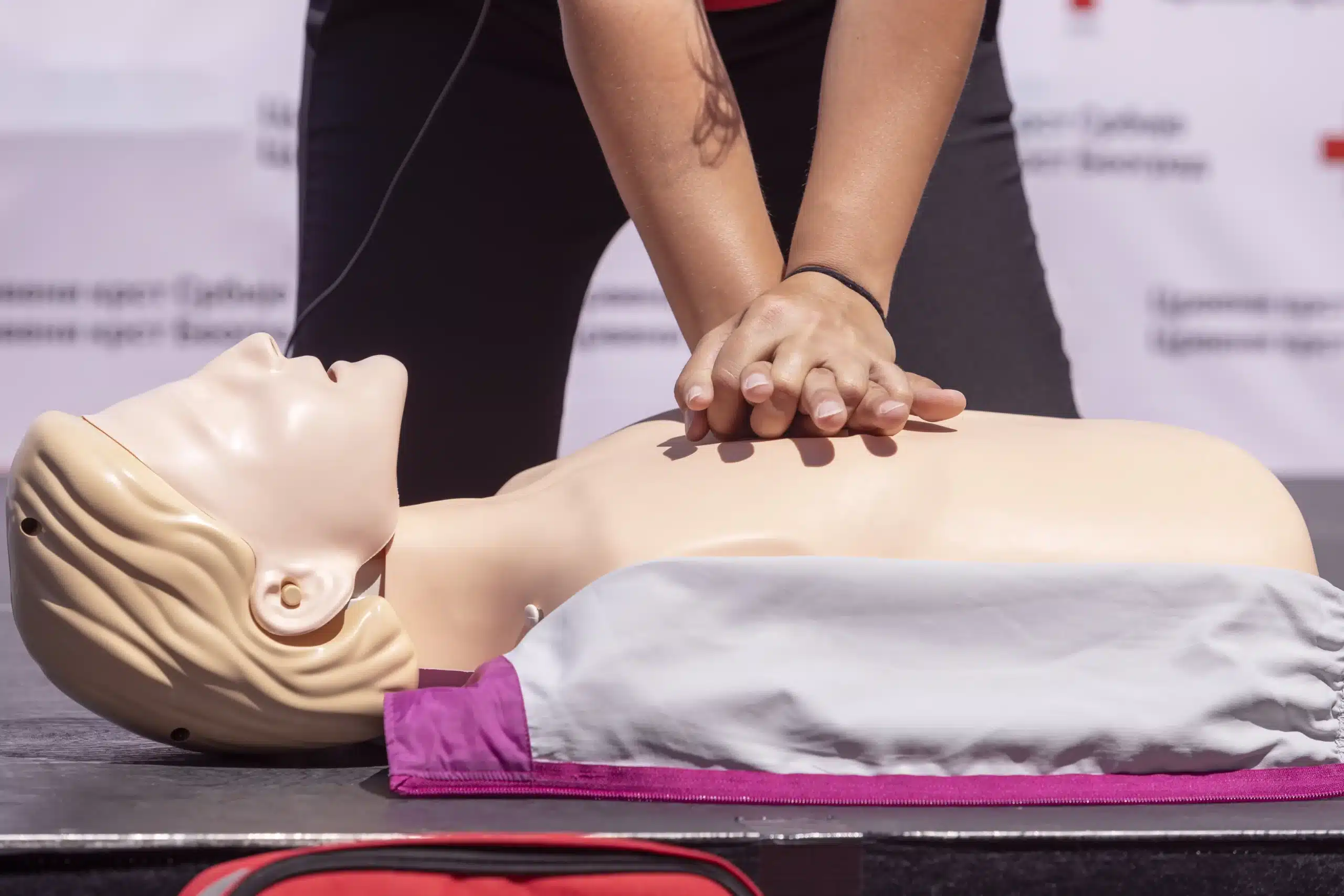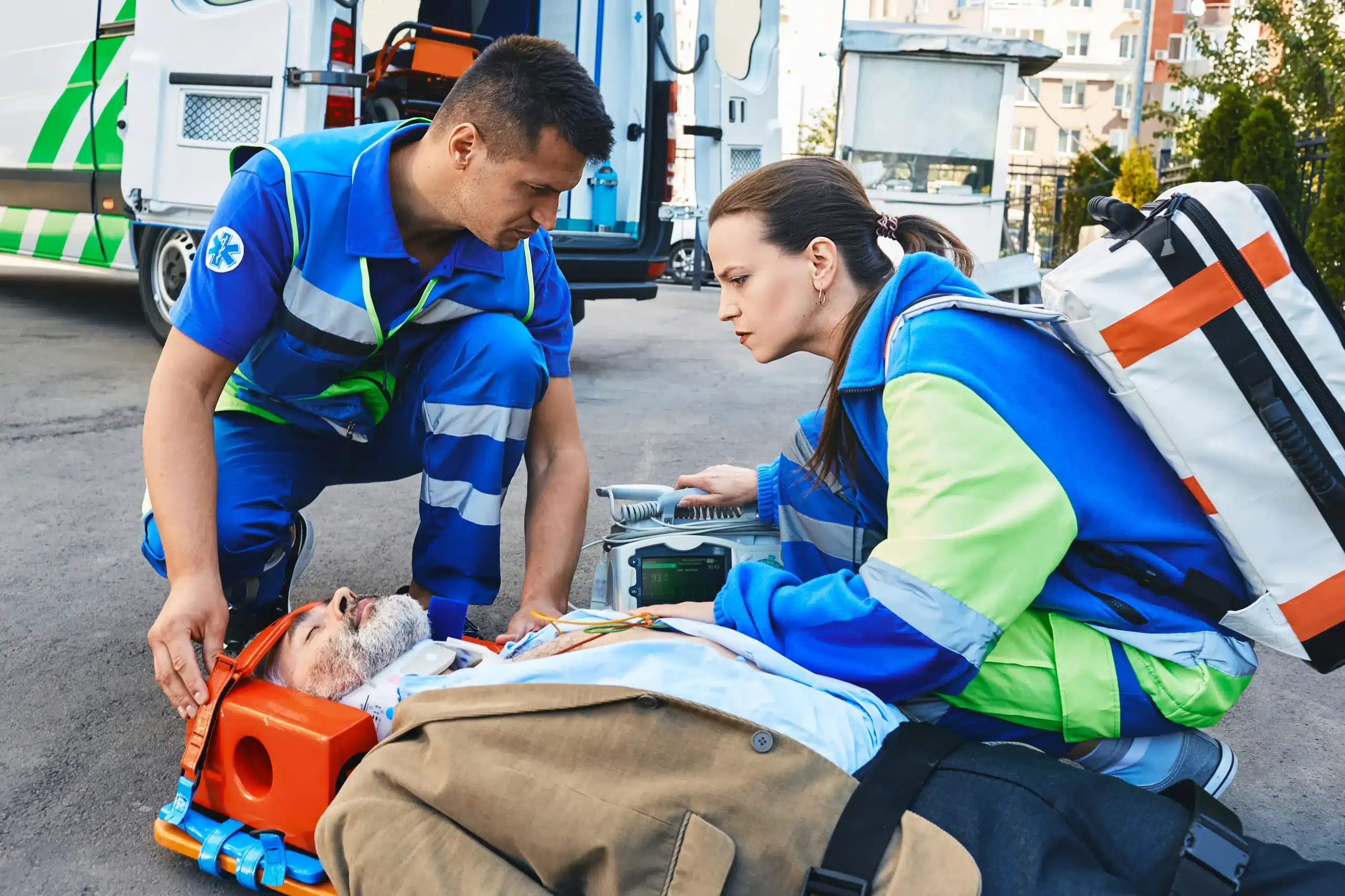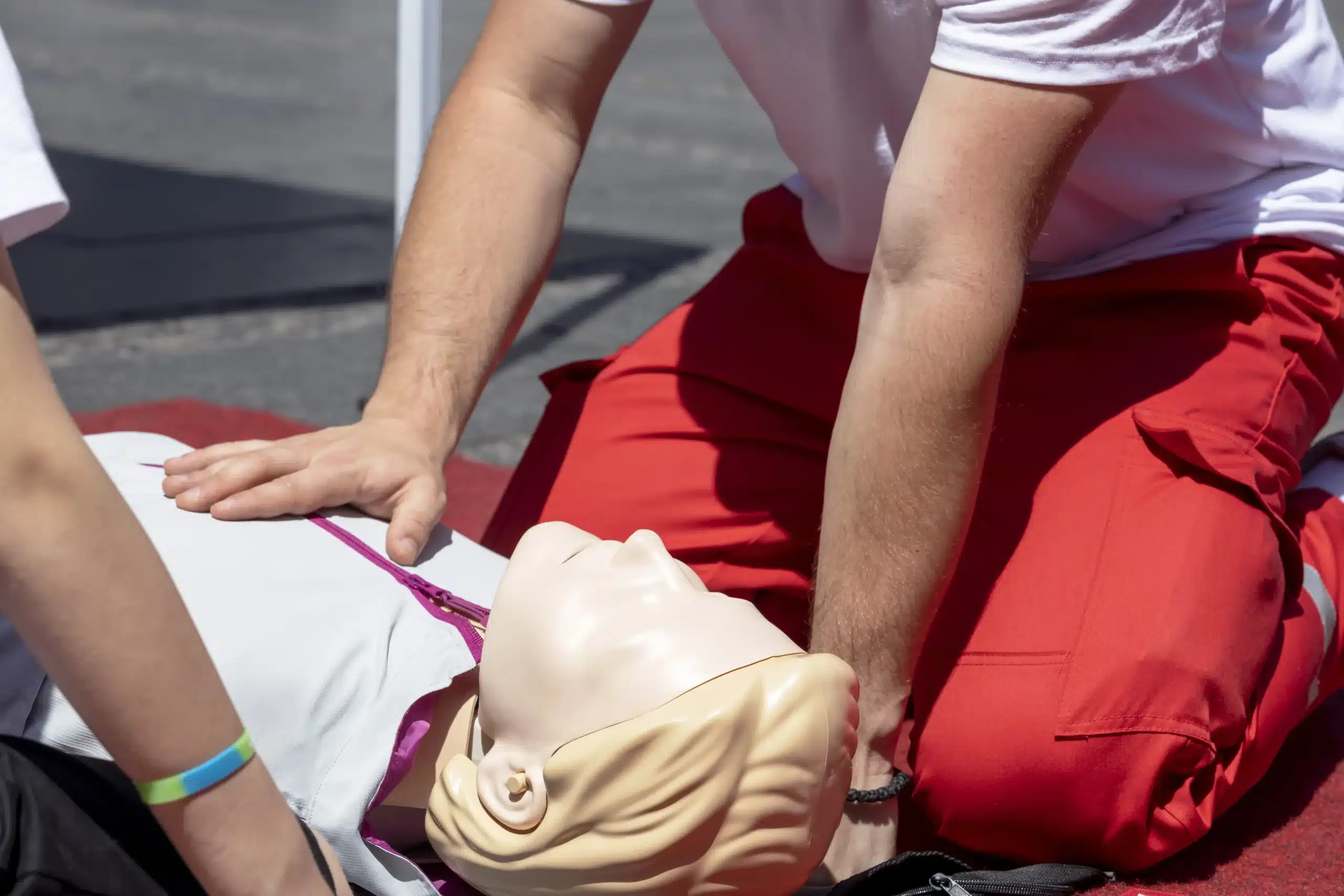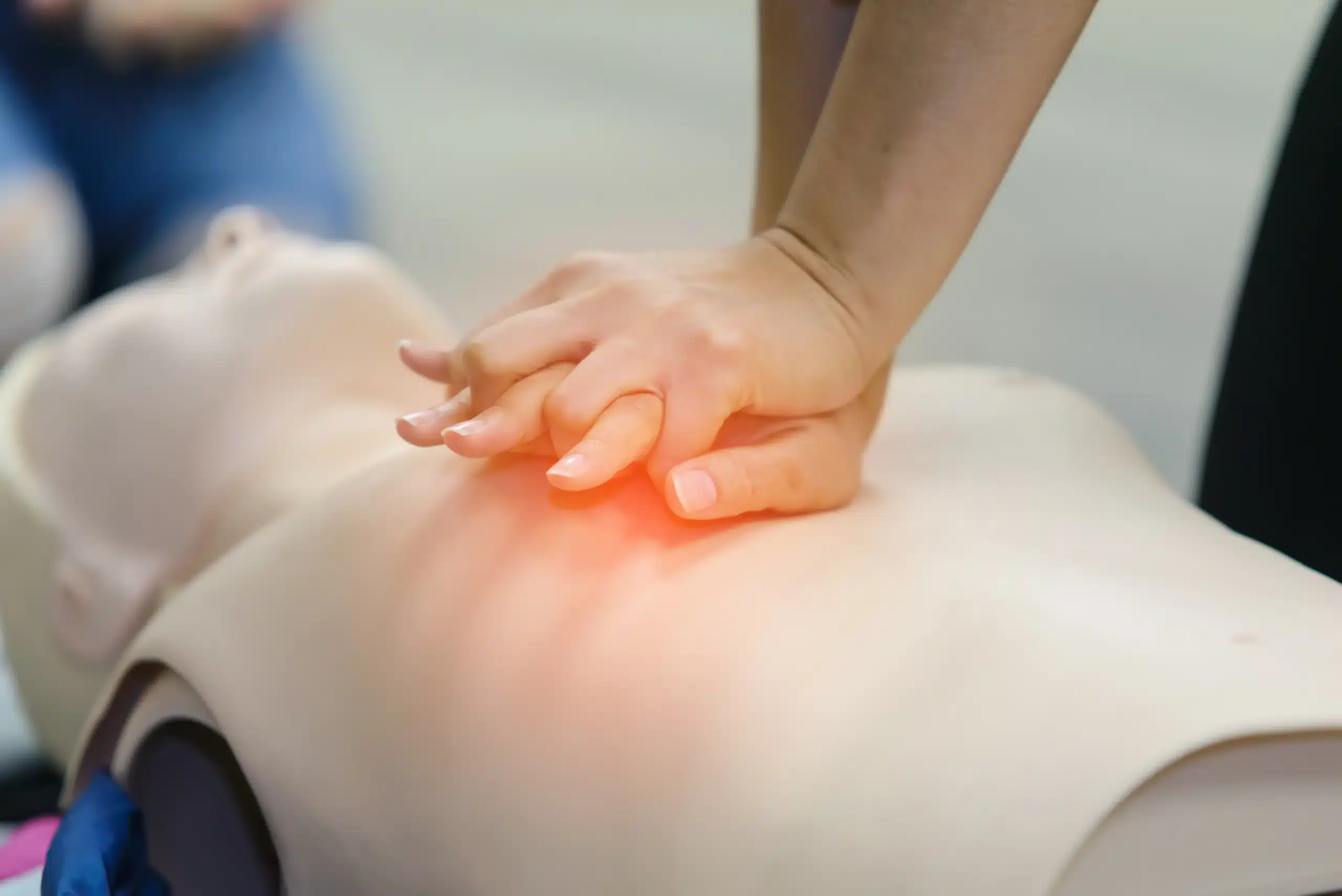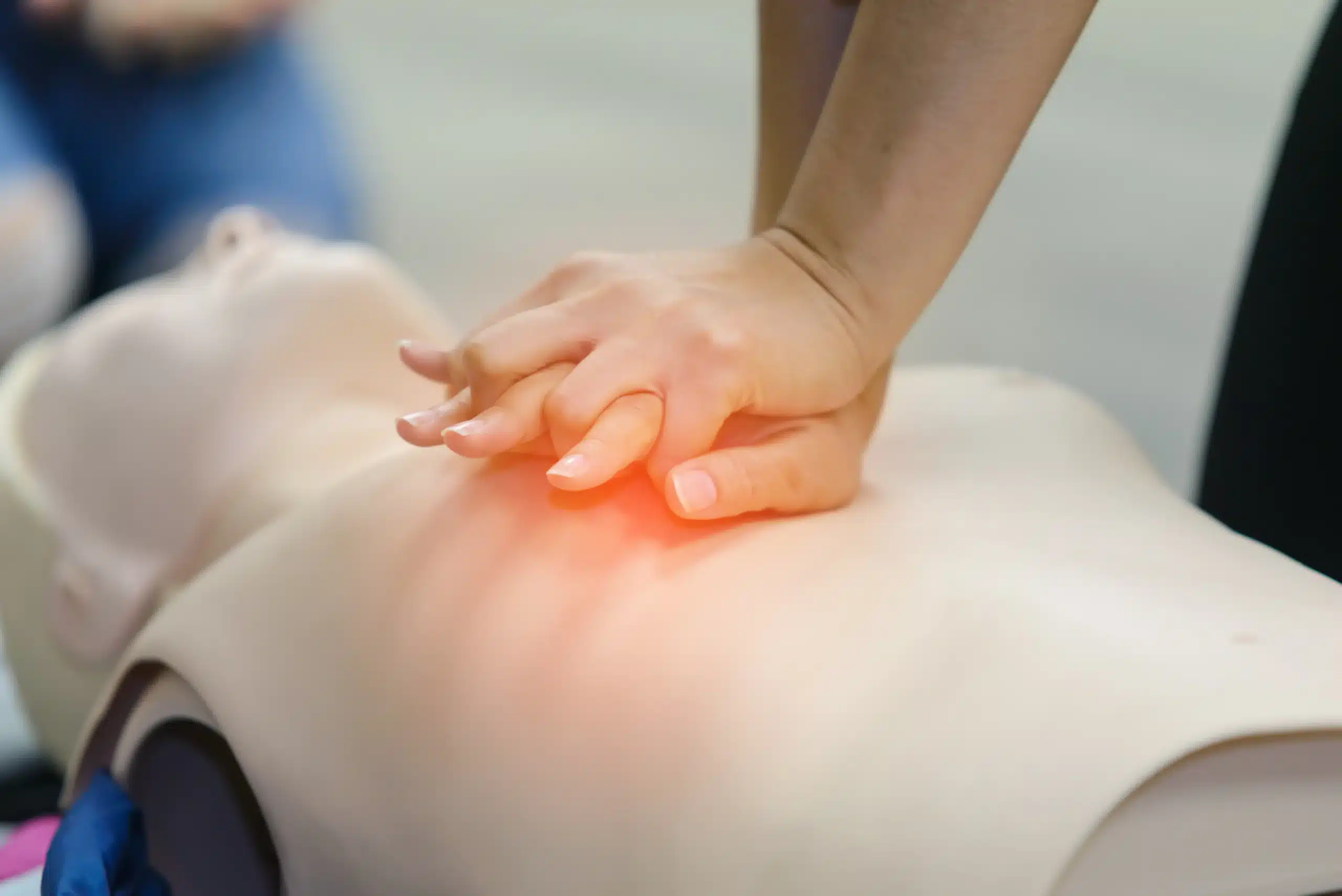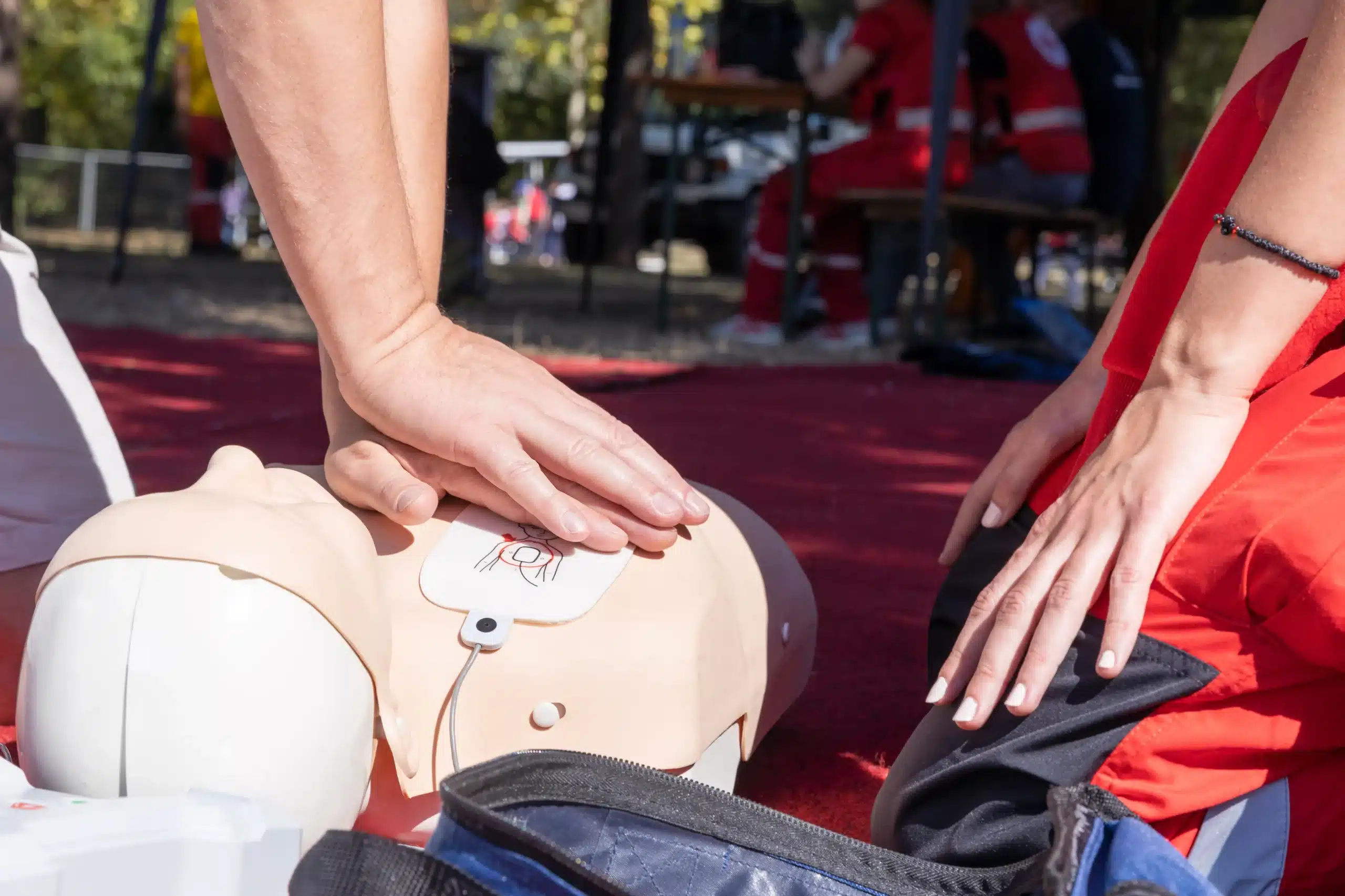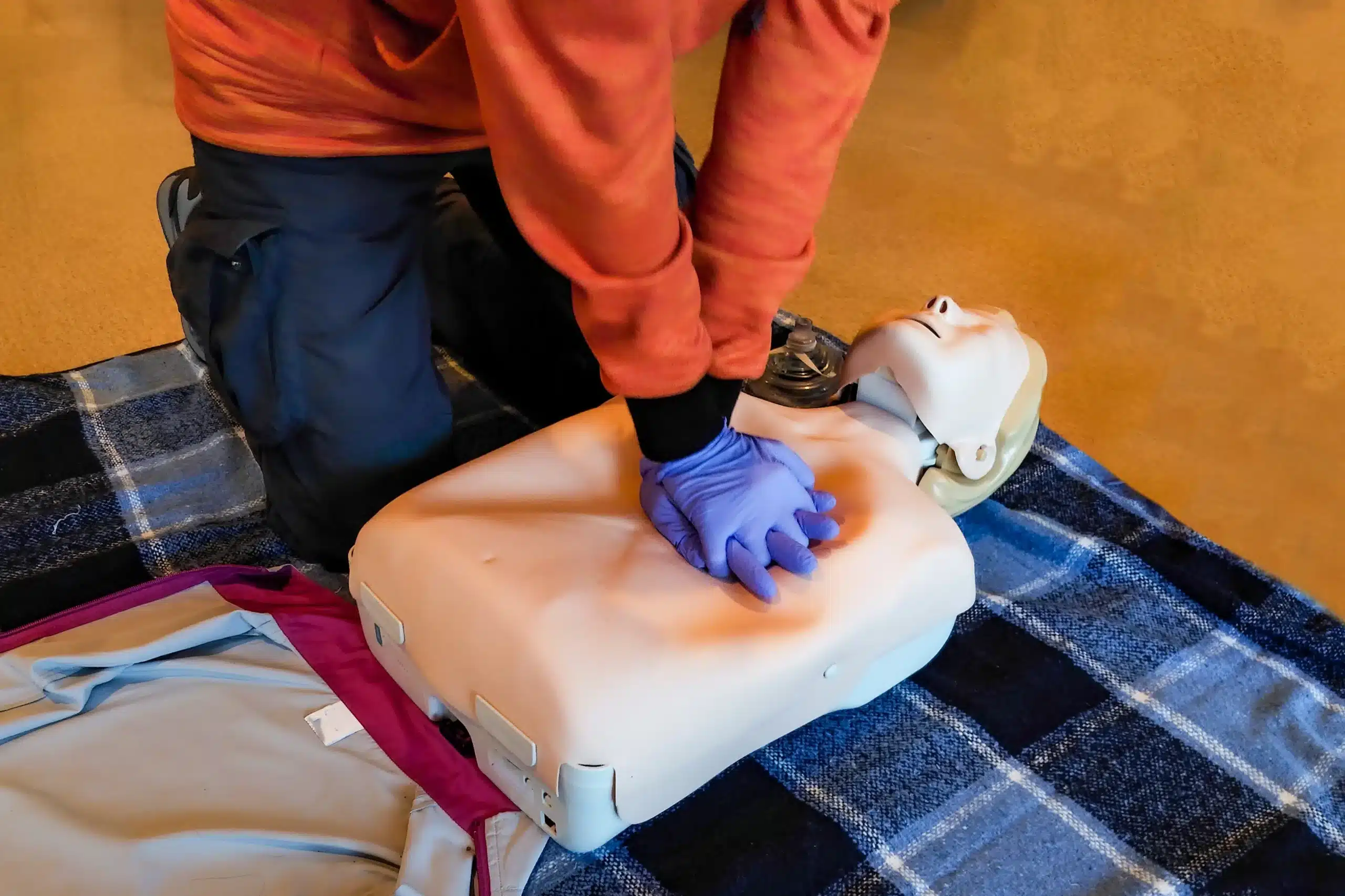Emergencies happen unexpectedly, and being equipped with life-saving skills can make a profound impact. BLS certification empowers you to provide critical care during medical emergencies, covering essential techniques like CPR, AED use, and choking relief. This article will serve as your comprehensive guide to BLS certification, exploring its importance, the skills it covers, and how to find training options near you. Whether you’re a healthcare professional, a caregiver, or simply someone who wants to be prepared, we’ll help you find “BLS certification near me” and guide you through the process of becoming certified. We’ll also discuss different course formats, costs, and recertification procedures.
Key Takeaways
- BLS skills are essential for everyone: From healthcare providers to everyday people, having BLS training can empower you to respond effectively in emergencies. Choose a course format that works for you, whether it’s in-person, online, or a blended approach.
- Finding the right BLS course is key: Explore various training providers, including local centers like Safety Training Seminars and national organizations, to compare costs, schedules, and course formats. Select a provider that aligns with your needs and offers reputable certification like the American Heart Association.
- Stay current with your BLS certification: Maintaining your skills is crucial for providing effective care. Track your expiration date and plan for recertification in advance. Consider refresher courses to stay sharp and confident in your abilities.
What is BLS Certification & Why Do You Need It?
BLS certification (Basic Life Support) focuses on providing immediate care during life-threatening emergencies. It’s the foundation for saving lives, a crucial skill for anyone working in healthcare, and beneficial for everyone. Knowing BLS can give you the confidence to act quickly and effectively in times of crisis.
What Does BLS Certification Cover?
BLS certification covers core lifesaving skills. You’ll learn how to perform high-quality CPR for adults, children, and infants, including AED (automated external defibrillator) use. The training also covers how to help someone who is choking. BLS courses typically start by reviewing basic life support principles and then move into practical skills sessions. You’ll practice these techniques in a safe environment with certified instructors so you’re fully prepared to respond in a real emergency.
Why is BLS Important for Healthcare Professionals and First Responders?
BLS certification is essential for healthcare professionals and first responders. It equips you with the skills to handle emergencies effectively, from recognizing cardiac arrest to providing immediate care while waiting for advanced medical help. Having this certification demonstrates your preparedness and commitment to patient safety. It’s often a job requirement in healthcare settings and shows employers you can handle critical situations. Beyond the professional advantages, BLS training empowers you to make a real difference.
Find BLS Certification Courses Near You
Finding the right BLS certification course means understanding your options. Let’s explore where you can find training, from local classes to online platforms.
Local Training Centers and Organizations
If you prefer hands-on learning and personal interaction, local training centers are an excellent choice. Safety Training Seminars, here in Palo Alto, offers comprehensive BLS certification courses covering essential lifesaving skills like high-quality CPR, AED use, and choking relief. We also serve surrounding areas like Redwood City and Menlo Park. Check with community centers, hospitals, and fire departments, as they often host BLS training sessions.
Online BLS Certification Platforms
Online BLS certification offers flexibility and convenience. Numerous platforms provide online courses allowing you to learn at your own pace. Keep in mind that prices vary depending on the provider and the training offered. Look for platforms that offer discounts or promotions. However, remember that the American Heart Association requires an in-person skills assessment, even for online coursework.
Palo Alto CPR Classes: Your Local Choice
For those in and around Palo Alto, Safety Training Seminars is a woman-owned, local AHA Training Center providing high-quality American Heart Association BLS, ACLS, PALS, CPR, and First-aid courses. We offer convenient daily classes and competitive pricing.
Other Providers
Several national organizations also offer BLS certification.
American Heart Association
The American Heart Association sets the standard for BLS training and requires an in-person skills assessment for certification. They offer various courses to meet different needs.
American Red Cross
The Red Cross offers flexible learning options, including online and blended learning, to accommodate various schedules and preferences.
National CPR Foundation
The National CPR Foundation provides a variety of CPR and BLS certification courses, many accessible online.
ProTrainings
ProTrainings offers online and blended learning courses, including BLS certification, a convenient option for busy professionals.
Health & Safety Institute (HSI)
HSI provides a range of health and safety training courses, including BLS certification, tailored for various professional needs. They often provide group discounts, beneficial for workplaces.
Choose Your BLS Course Format
BLS certification courses come in several formats, so you can find one that works for your schedule and learning style. Let’s explore the most common options: in-person, online, and blended learning.
In-Person Training: Hands-on Learning
In-person BLS training is the most traditional format. It offers hands-on learning with a certified instructor who can provide real-time feedback and answer questions. This format is essential for the required skills assessment, which involves demonstrating CPR techniques and other critical skills on a manikin. In-person training ensures you build confidence and competence in performing life-saving procedures. Local providers, like Redwood City CPR Classes, offer in-person BLS certification covering essential skills, including CPR and first aid.
Online BLS Certification: Learn at Your Own Pace
Online BLS certification offers flexibility for those with busy schedules or limited access to in-person classes. You can study the material at your own pace and revisit sections as needed. Online courses vary in price, allowing you to find a program that fits your budget. The online portion of the BLS CPR Provider Heartcode course typically takes between one and two hours. However, keep in mind that online-only courses usually require a separate in-person skills session for official certification.
Blended Learning: Combining Online and In-Person
Blended learning combines the convenience of online learning with the benefits of hands-on instruction. You’ll typically complete the cognitive portion of the course online, then attend a shorter in-person session to practice your skills and complete the certification assessment. Safety Training Seminars offers this blended format, ensuring a thorough understanding of essential life-saving skills. The Red Cross also provides a blended learning program for BLS training, combining online coursework with in-person skills sessions. This approach offers a balanced and effective way to achieve BLS certification.
BLS Certification: Costs & Considerations
When considering BLS certification, understanding the costs is essential. Several factors influence the overall expense, and comparing options helps you find the best value.
How Much Does BLS Certification Cost?
BLS certification costs vary based on location, course format (online or in-person), and the training provider. Generally, you can expect to pay between $70 and $120 for BLS provider certification. Some providers offer combined courses, such as BLS and First Aid, at a bundled price. For example, you might find options to add First Aid to your BLS certification for an additional fee. At Safety Training Seminars, our BLS Provider course, including online learning and skills assessment, is $120. You can learn more and register on our BLS course page.
Group Discounts and Special Offers
If you’re certifying a group, such as coworkers or a team of volunteers, inquire about group discounts. Many training centers, including Safety Training Seminars, offer reduced rates for group registrations. Check our group discounts page for more information. Keep an eye out for special promotions or discounts offered by various providers.
What Affects Course Costs?
Course fees typically cover training materials, instructor fees, and certification processing. The cost often includes the online exam or skills assessment required for certification. Some providers may include additional perks, such as access to online resources or refresher materials, in their pricing. The type of certification program, such as the American Heart Association’s RQI program, can also influence the cost.
Compare Course Options and Providers
Before committing to a BLS course, compare options from different providers. Consider factors like course format, location, schedule, and included amenities. Evaluate the provider’s reputation and ensure they offer American Heart Association certification, which is widely recognized and accepted. Don’t forget to check our low price guarantee to ensure you’re getting good value for your training. Choosing the right BLS course involves balancing cost, convenience, and the quality of instruction.
Maintain Your BLS Certification
Keeping your BLS certification current is essential for any healthcare provider or first responder. It ensures you’re equipped with the latest life-saving techniques and knowledge. This section will guide you through the recertification process and offer tips for staying up-to-date.
How to Renew Your BLS Certification
BLS certification is typically valid for two years. You’ll need to recertify before it expires to avoid any gaps in your qualifications. Renewal courses cover the same core content as initial BLS training, including CPR, AED use, and how to relieve choking. You can find renewal courses through various organizations like the American Heart Association and the American Red Cross. Many training centers also offer refresher courses specifically designed for recertification. Start looking for a renewal course about six months before your certification is due to expire. This gives you plenty of time to find a class that fits your schedule. At Palo Alto CPR Classes, we offer BLS renewal courses designed to fit your busy schedule.
BLS Refresher Courses
Even if your certification isn’t due for renewal yet, consider taking a BLS refresher course to brush up on your skills. These courses offer a concise review of essential BLS techniques and can be a great way to maintain your confidence and proficiency. Many organizations offer flexible learning options, including online and in-person formats, to accommodate different schedules and preferences. A refresher course can also be helpful if you haven’t used your BLS skills recently or want to stay ahead of any updates to the guidelines. Check with your employer to see if they offer free or discounted refresher courses.
Stay Up-to-Date with BLS Guidelines
BLS guidelines are periodically updated to reflect the latest scientific research and best practices. Staying informed about these changes is crucial for providing effective care. Organizations like the American Heart Association and the Red Cross regularly publish updated guidelines and recommendations. Subscribing to their newsletters or checking their websites can help you stay informed. Reviewing the latest guidelines before your renewal course is also helpful.
Tips for Easy Recertification
Recertification is a straightforward process, especially if you plan. Keep track of your certification expiration date and mark it on your calendar. Research different course providers like Palo Alto CPR Classes and compare their offerings to find the best fit for your needs and budget. Register for your renewal course in advance to secure your spot, especially if you have a busy schedule. Finally, remember to bring your current BLS certification card to your renewal course as proof of your previous training. By following these tips, you can ensure a smooth and hassle-free recertification experience.
Related Articles
- BLS Certification in Palo Alto: A Comprehensive Guide
- BLS Certification in Palo Alto: Your Comprehensive Guide – Palo Alto CPR Classes
- Find BLS Training Near Me: A Complete Guide – Palo Alto CPR Classes
Frequently Asked Questions
What’s the difference between CPR and BLS?
CPR (Cardiopulmonary Resuscitation) is a specific lifesaving technique used when someone’s heart or breathing has stopped. BLS (Basic Life Support) is a broader term encompassing CPR along with other skills like using an AED and relieving choking. Think of CPR as one piece of the BLS puzzle.
How long does it take to get BLS certified?
The time commitment varies depending on the course format and provider. In-person BLS courses typically take a full day, while blended learning (combining online and in-person training) might take less time. Online courses offer more flexibility, allowing you to complete the coursework at your own pace, but still require an in-person skills assessment.
Is online BLS certification accepted everywhere?
While online BLS courses offer convenience, most organizations and employers require an in-person skills assessment component for certification. Make sure the online course you choose includes or offers access to this essential hands-on training. The American Heart Association, for example, mandates an in-person skills check even if you complete the cognitive portion of the course online.
How often do I need to renew my BLS certification?
BLS certification is typically valid for two years. It’s essential to renew your certification before it expires to maintain your credentials and ensure your skills are up-to-date. Set a reminder or mark your calendar to avoid letting your certification lapse.
What if I don’t work in healthcare? Do I still need BLS?
While BLS certification is often a requirement for healthcare professionals, it’s a valuable skill for anyone to have. Knowing how to respond to emergencies like cardiac arrest or choking can save lives, whether at home, in the workplace, or out in the community. It empowers you to act quickly and confidently in a crisis.
